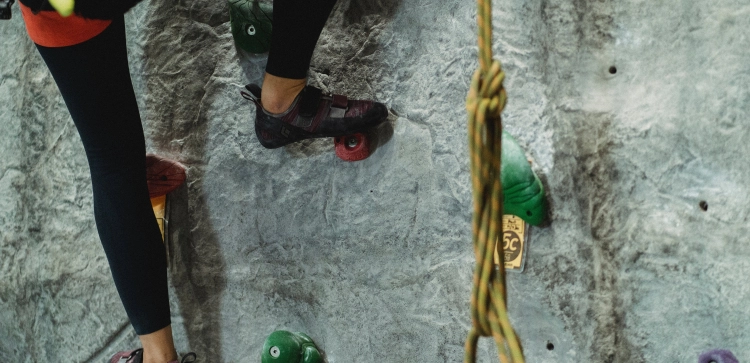







To stop relying solely on strength and improve your climbing technique, here are a few tips:
-
Focus on footwork: Precise footwork is essential for efficient climbing, so be sure to place your feet accurately and use them to support your weight.
-
Practice precise movement: Avoid making big, energy-wasting movements by moving efficiently and with intention on the wall.
-
Use your body positioning: Body positioning is crucial to efficient climbing, so learn to use your hips, shoulders, and arms to your advantage.
-
Climb with intention: Instead of just trying to reach the top of the route, focus on each move and try to execute it as perfectly as possible to develop good habits and reinforce proper technique.
-
Get feedback: Climbing with a partner who can give you feedback on your technique can be incredibly helpful in identifying areas for improvement.
Remember that developing good technique takes time and practice, so be patient with yourself and keep working at it. By improving your technique, you'll be able to climb more efficiently and effectively.
Hang boarding can improve finger strength and grip endurance, which are important factors in climbing performance. However, it is not a replacement for climbing, as climbing involves a range of skills including footwork, balance, technique, and mental focus.
To become a better climber, it is essential to practice climbing regularly and supplement with exercises such as hang boarding. By incorporating both climbing and hang boarding into your training, you can develop a well-rounded set of skills that will help you climb more efficiently and effectively.
To stop your toes from hurting in climbing shoes, you can try the following tips:
- Make sure you're wearing the right size of climbing shoes.
- Consider getting shoes with a wider toe box or stretch your existing shoes to make more room for your toes.
- Take breaks and remove your shoes between climbs to allow your toes to rest.
- Gradually build up the amount of time you spend in your shoes to allow your feet to adjust.
- Try wearing thinner socks or no socks at all to reduce friction and pressure on your toes.
- Use foot tape or pads to cushion and protect your toes from rubbing and pressure.



